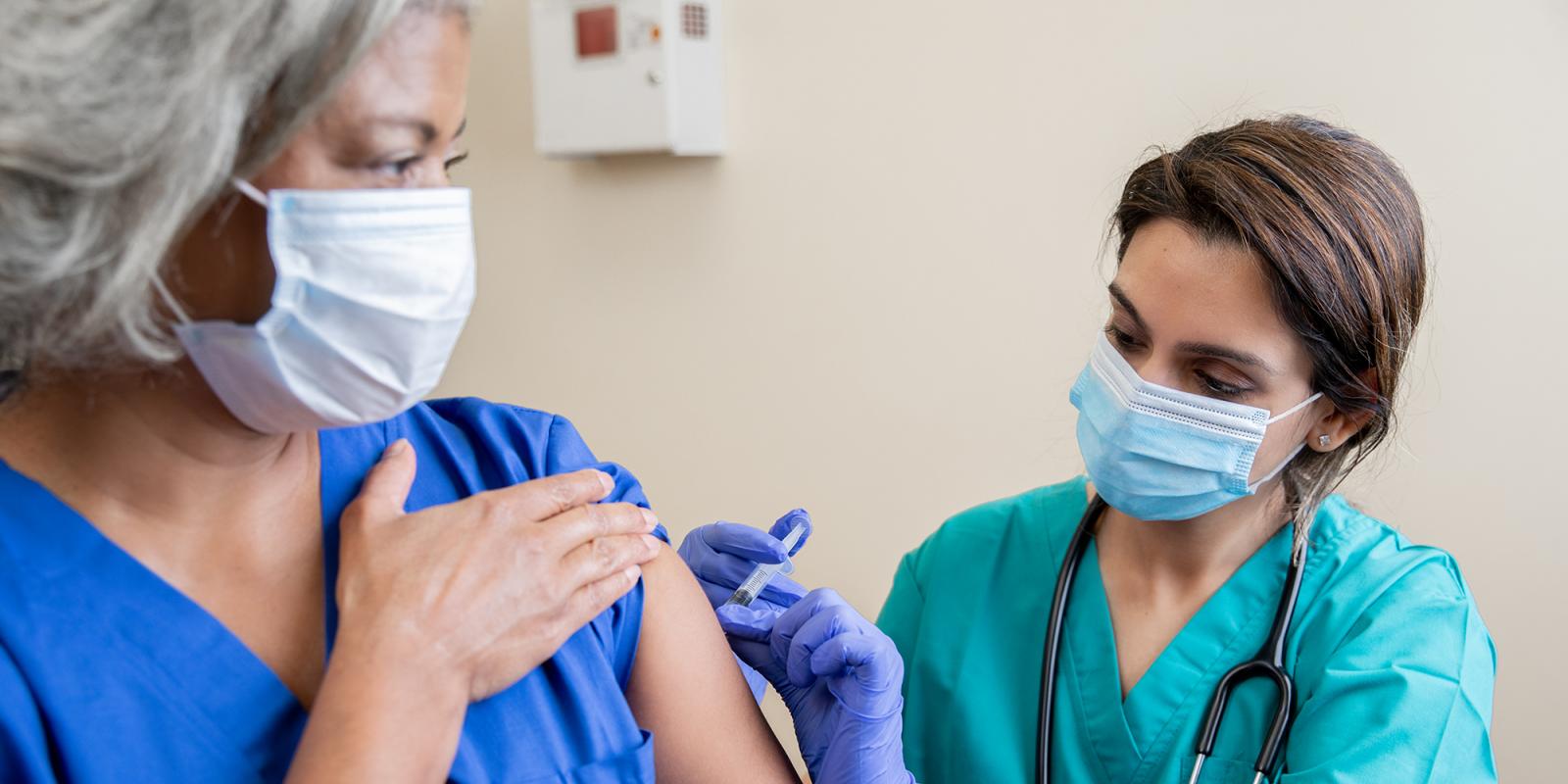As we prepared to celebrate the holidays differently in 2020, our holiday spirit shattered. Gatherings would be only with our immediate households, we would not travel to see relatives or friends and gifts were unceremoniously dropped on a doorstep by strangers. The pandemic took so much away from us. But as the days grew shorter and darker, and we mourned the loss of our holiday season, there was a bright light beginning to shine.
In early December, the FDA approved Emergency Use Authorizations for Pfizer Biotech and Moderna COVID-19 vaccines and on Dec. 14 the first immunizations in the United States outside trials were administered. The Advisory Committee on Immunization Practices, the body that advises the CDC director on the use of vaccines, recommended that healthcare workers and long-term care residents be the first to receive the vaccine.
Nursing homes are part of the Long-Term Care Pharmacy Partnership with CVS and Walgreens, rolled out in November. This partnership allowed nursing homes, assisted living communities and HUD 202 buildings to sign up voluntarily, with the hope that this would deliver vaccines to their residents, clients and staff. Many details remain unknow about the partnership, but these providers took a leap of faith, saw a light at the end of the tunnel, and signed up.
Vaccine delivery became a reality in mid-December. States began receiving shipments, allocated them to the Pharmacy Partners, and on Dec. 21, vaccine clinics began in nursing homes. We saw media reports of residents and staff pulling up their sleeves, sticking out their arms and getting the shot, with smiles on their faces and tears in their eyes. The vaccine arrived and allowed the holidays to be celebrated with excitement and hope. There was even more to be grateful for this year.
Trouble Brewing Among Frontline Staff
Yet at LeadingAge, along with the vaccine joy, we began to hear of hesitancy and reluctance, particularly from frontline staff. Frontline staff who cared for those who became sick and helped to protect others, were holding back. On Feb. 1, the CDC posted a Morbidity and Mortality Weekly Report showing that between Dec. 18 and Jan. 17, only 37.5 percent of nursing home staff stepped up to be vaccinated. For residents, the rate was a much higher, at 77.8 percent.
We dug in and started asking more in-depth questions of our members and state partners. Why the reluctance? Why are staff not signing up? We uncovered a consistent list of reasons from nursing homes around the country. Staff were scared about the vaccine’s quick development, they thought emergency approval meant it was rushed, they were fearful of side effects, they thought they could get COVID from the vaccine, they feared the vaccine would make them infertile and they worried the side effects could keep them out of work.
Staff encouraged other staff loudly and softly, they wrote it down, they wore buttons—all to encourage immunization.
The hesitancy was more pronounced in staff of color. The history of vaccine skepticism in people of color runs deep and created another barrier organizations needed to surmount. LeadingAge members also emphasized to us that staff were getting misinformation from social media.
As nursing homes ramped up for their pharmacy partnership clinics, ideas emerged, resources were created and information sessions were offered to help address hesitancy and reluctance to the vaccine. Innovation and creativity led the way in nursing homes as they held vaccine parties, made buttons and T-shirts, had giveaways and raffles and incorporated food and snacks—all to help encourage staff to get immunized.
A few more staff stuck out their arms for the shot, but the numbers remained low. We asked why would staff not be lined up and down the parking lot to receive a vaccine that will save lives? What we found was that the answer is complex and personal for each staff member.
Continued Efforts to Encourage Immunization
We commonly heard that staff were waiting for the next partnership clinic. This became an opportunity to work with staff who had been vaccinated in the first clinic. Nursing homes asked staff who received the first dose to publicly state how they were feeling post-vaccination, to describe their non-adverse reactions to other staff.
They did it loudly and softly, they wrote it down, they wore buttons—using any way they could to let other staff know they were fine. Maybe they had a sore arm but they were here at work and waiting to receive their booster shot. They became influencers!
We heard from nursing homes that they began individual and small group meetings, helping to translate to staff who spoke English as a second language the benefits of the vaccine, talking to staff peer-to-peer about fears and creating myth-busters to dispel reports from social media.
Nursing homes were doing what they are known for: they were taking care of people, people that become their family, their family of staff and of residents. Staff shared their experience with other staff and made it personal. Questions and anxieties surfaced and staff listed and answered questions. They took care of one another—their family.
The CDC and provider associations like LeadingAge created toolkits and resources, videos and flyers, messages and letters. While we’re waiting on data for the next full month of partnership clinics, we have heard from nursing homes that the numbers of staff who are immunized has increased.
The personal attention nursing home staff is giving one another to help with hesitancy and reluctance is trending upward, one arm at a time. It is still like the holidays, all bright and shiny, smiles and tears with your family; a gift of hope on your doorstep. But this time it is not by a stranger but via your co-worker, your family.
Janine Finck-Boyle, MBA/HCA, LNHA, is vice president of Regulatory Affairs at LeadingAge in Washington, DC, and licensed as a nursing home administrator.













